

In this text, we are introduced to blacksmith and artist Jokum Lind Jensen, who employs ancient techniques to create contemporary sculptures in mild steel. His sculptures showcase his search for the monumental in the minute, and his curiosity towards materiality and the many possibilities it holds.
You were trained as a blacksmith in England in the middle of the '90s, and after many years of working as a restoration blacksmith you decided to proceed to an artistic higher education in Sweden. Tell us about this shift in your profession.1
These were formative years for me in very many ways. When I started at HDK-Valand – Academy of Art and Design at the University of Gothenburg, I was pretty unfamiliar with the concepts of an artistic practice, and rather set in my ideas about what good blacksmithing was. I took great pride in my craftsmanship, and it was a hard realisation to come to that if I wanted to push myself further and develop an artistic practice, I needed to unlearn all my hard-earned practices and craftsmanship, and start to see the material as something I had a true dialogue with, instead of something I had to master and force into shape. I allowed myself to let go of all my rules, at least for a while, to be able to experiment and play, and to start to rediscover the material I thought I knew. A turning point was to make deliberate technical errors and access them from an artist’s point of view, not a craftsperson's. These experiments led to the beginning of an artistic process that I still work within.

How would you describe it? What are the main characteristics of your way of working?
At the centre of all my work is the forging process. Essentially, it is the same procedure that blacksmiths have been working with since the iron age. When steel reaches temperatures between 900 and 1200 degrees celsius, it becomes soft enough to be manipulated, and has a malleability and plasticity that largely resembles clay. It can then be formed by the help of tools. Traditionally this process is done by heating the steel in a coal forge, and forming it with a hand hammer over an anvil. I heat the steel by induction (in a machine that heats the steel by electromagnetic impulses) or in gas furnaces. Both techniques have the advantages that they are fast, precise, and that they potentially are less pollutive than a coal forge. I then work extensively with air-powered machine hammers, hitting the material with a force much bigger than I could do by hand. This vastly extends my possibilities to manipulate the material, and enables me to explore forms and techniques that are not possible with hand-forging.
The material is what we call mild steel today, but what is known by most people as iron. I occasionally use copper or other alloys of steel, but my primary material is mild steel.2
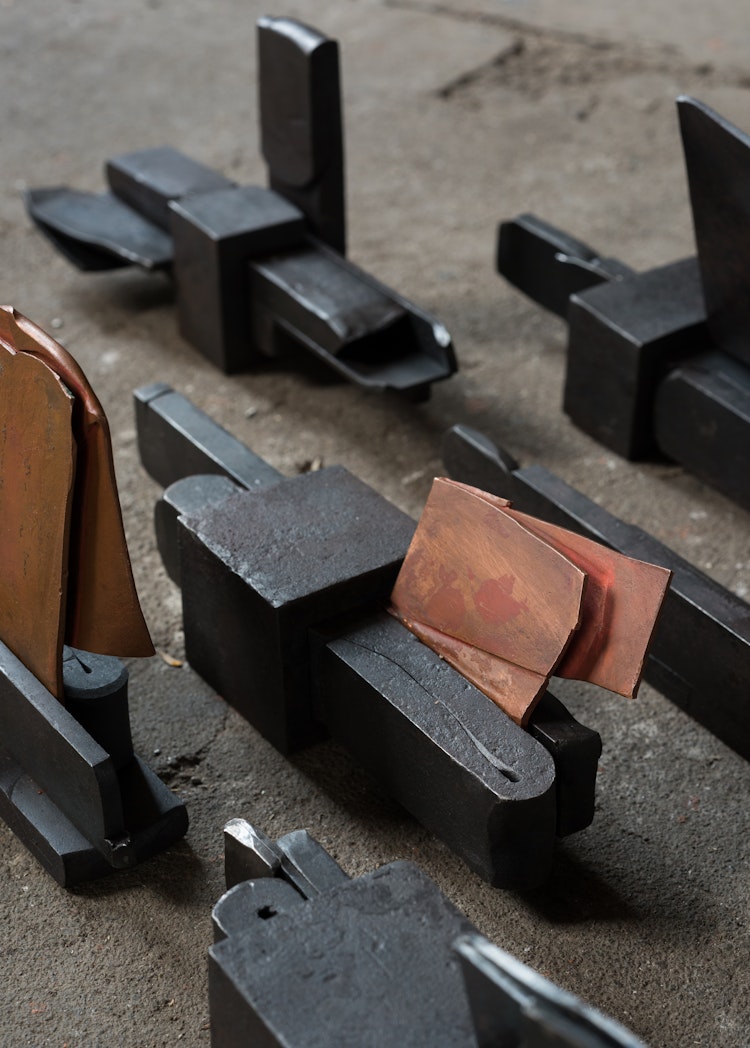
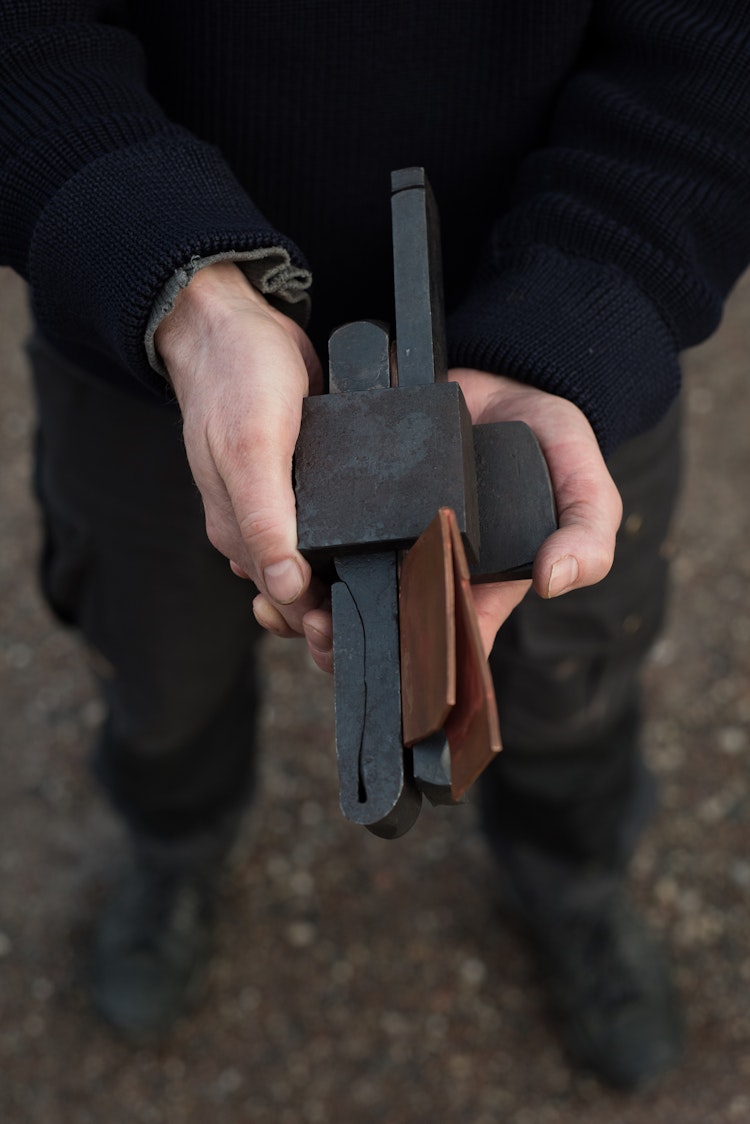
What does the concept of essence of the material mean to you? And how do you approach it?
The general norm within the craft of blacksmithing, and also within other parts of my practice, is to control and direct the forging process, to master the material. But for the investigations in this part of my artistic process, the intention is to try to support the material’s own movements, its will, to expose its properties and facilitate possibilities for it to show new shapes that I cannot predict. The very soft, round, organic, almost flesh-like, and uncontrollable shapes that can emerge in the hot-forging process are my primary interest and the centre of my investigation. I find these forms fascinating because they in a way are the truest expression of the material's malleable possibilities. They show a side, or property, of this very hard and rigid material that we rarely see, and that most people do not even know exists. For me, these soft shapes are the soul of the material, or at least a connection to that soul.
As the whole foundation of these pieces of work is to expose unpredictable ways of the material, I cannot sketch beforehand, as I would not be able to re-create what I had sketched, or predict the shapes that emerge in the process. I simply make lots of tests, that then guide me onto the next level of tests. Primarily, I fold and bend the steel pieces, forge them onto and into themselves, make impressions with various tools that I then rework, and maybe fold again, only to reforge them.
Within this process the dialogue with the material, and the guidance of the progression, is critical to reach the full potential of exposure. There must be a big element of play and exploration, but at the same time enough control to direct the route and keep it moving. This method is laborious and time consuming, full of dead ends and doubt, testing new ideas that constantly emerge, making and re-making parts. I must constantly keep an open mind, and try possible new ways of showing the material’s potential.
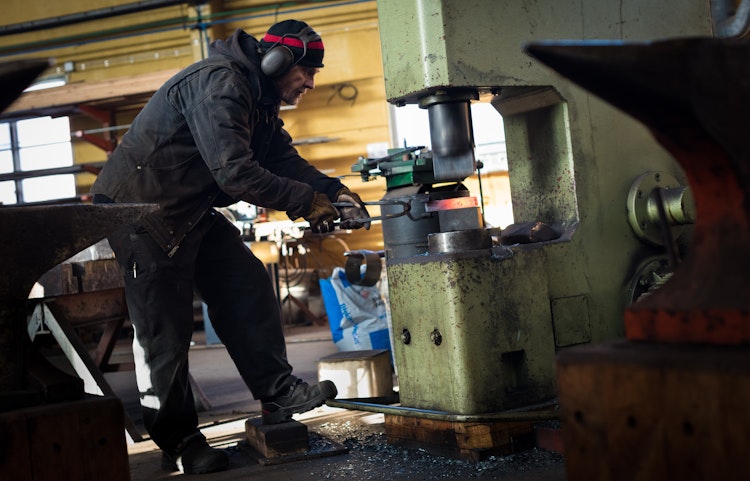
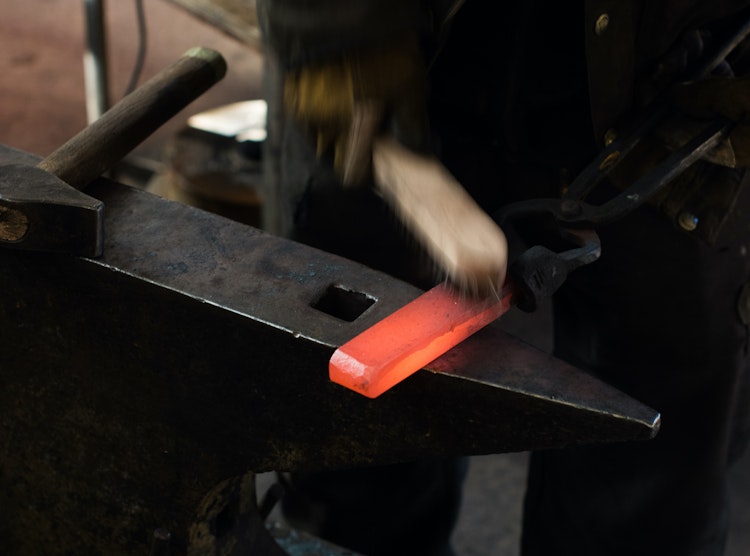
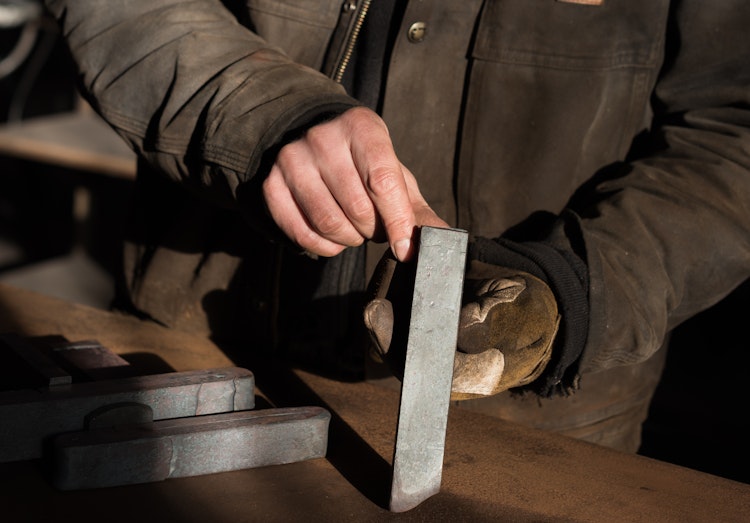
What is the next step?
Once I have made a number of different objects that I find have their own presence and have a story to tell that are carrying the idea of the material described earlier, I start to combine them. Putting together various pieces, forging new pieces to support them, and constantly changing and re-evaluating them is a laborious process. In this process, I am guided by a set of personal aesthetics that have many and – to me – interrelated references.
One such reference is a constant dialogue with the historical side of my craft, that I know and value, and that I like to reference in the techniques I use. I find it brings connection to a larger entity, a collective presence of the material history of the craft that is important, both for my own legitimacy as a craftsperson, but also for my own understanding of my role or purpose within the craft. For instance An example would be the collars I use extensively in the The Dark series. This is an almost 1000-year-old way of joining two or more pieces of metal, that I try to find new aesthetics for, to deconstruct and rebuild in a contemporary way.
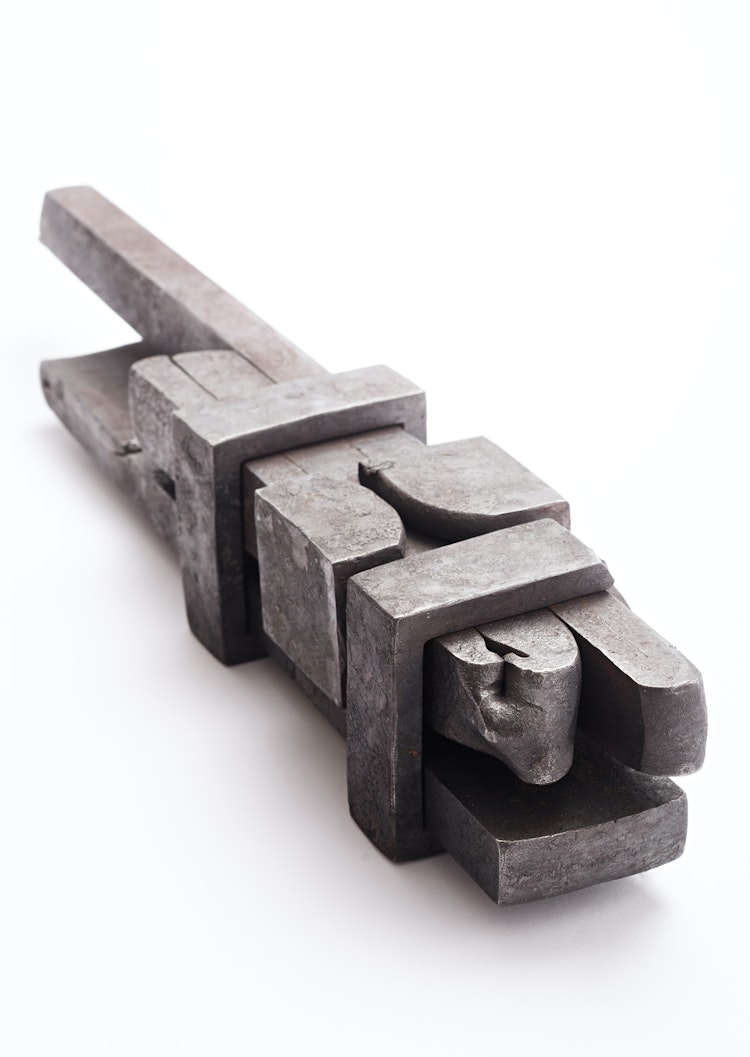
Another reference is nature – maybe not literally, but more as the presence of natural powers like storms, fog over the lakes, or the long grey dusk of November in Dalsland.
I want these works to have a strong self-contained presence. I want all the parts in them to support each other and work together as a single unity, reflecting both the properties of the softness of the material, but in conjunction with more stereotypical steel properties like weight, rigidness, the dark hues of the material. Within my process I like to mix/ juxtapose these qualities until I reach a feeling of monumentality. Not necessarily in size, but in intensity. I want my work to have a feeling of presence that transcends the actual physical work.